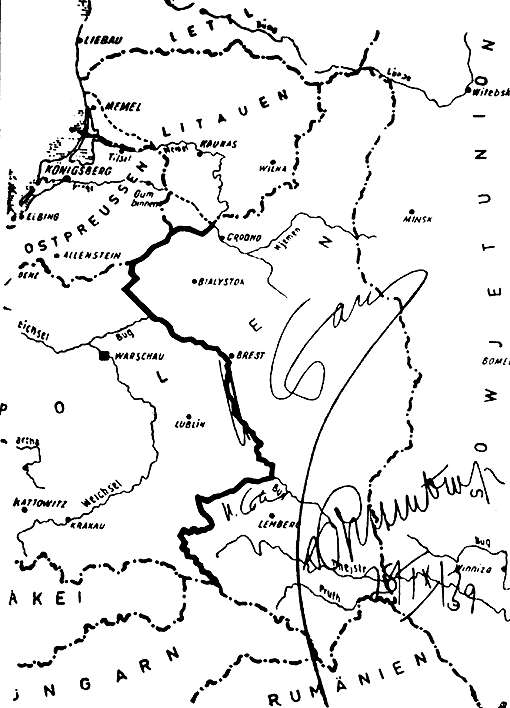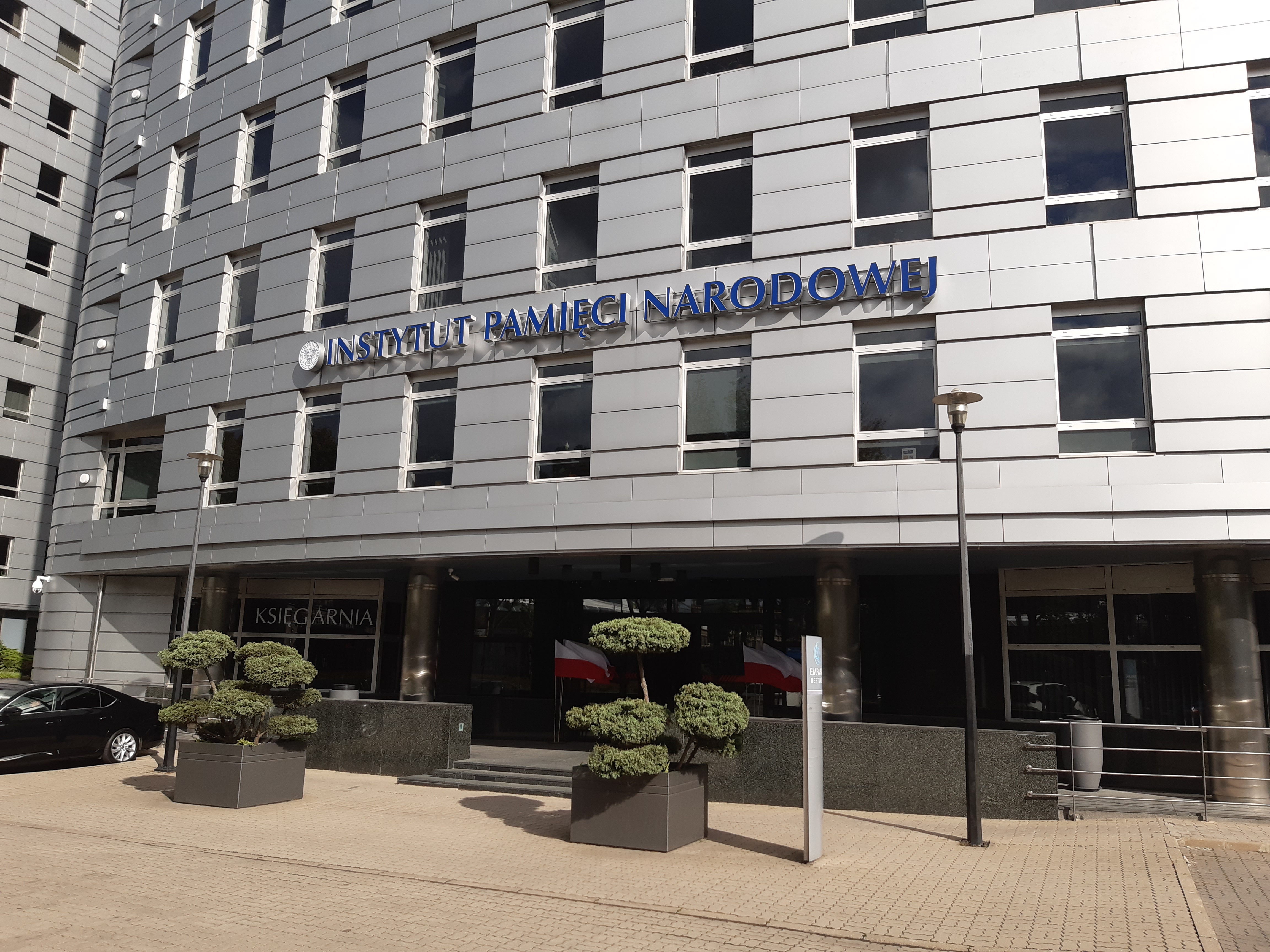|
Niewolno
Niewolno is a village in the administrative district of Gmina Trzemeszno, within Gniezno County, Greater Poland Voivodeship, in central Poland. It lies approximately north of Trzemeszno, east of Gniezno, and east of the regional capital Poznań. History As part of the region of Greater Poland, i.e. the cradle of the Polish state, the area formed part of Poland since its establishment in the 10th century. Niewolno was a private church village of the monastery in Trzemeszno, administratively located in the Gniezno County in the Kalisz Voivodeship in the Greater Poland Province of the Kingdom of Poland. During the German invasion of Poland at the start of World War II, it was the site of a Polish defense, and on September 11, 1939, German troops carried out a massacre of 18 captured Polish defenders of the village (see ''Nazi crimes against the Polish nation''). During the subsequent German occupation, in 1939 and 1941, the occupiers carried out expulsions of Poles, whose house ... [...More Info...] [...Related Items...] OR: [Wikipedia] [Google] [Baidu] |
Gmina Trzemeszno
__NOTOC__ Gmina Trzemeszno is an urban-rural gmina (administrative district) in Gniezno County, Greater Poland Voivodeship, in west-central Poland. Its seat is the town of Trzemeszno, which lies approximately east of Gniezno and east of the regional capital Poznań. The gmina covers an area of , and as of 2006 its total population is 14,019 (out of which the population of Trzemeszno amounts to 7,789, and the population of the rural part of the gmina is 6,230). Villages Apart from the town of Trzemeszno, Gmina Trzemeszno contains the villages and settlements of Bieślin, Brzozowiec, Bystrzyca, Cytrynowo, Dąbrowa, Duszno, Dysiek, Folusz, Gołąbki, Grabowo, Huta Trzemeszeńska, Ignalin, Jastrzębowo, Jerzykowo, Kamieniec, Kierzkowo, Kozłówko, Kozłowo, Kruchowo, Kurze Grzędy, Ławki, Lubiń, Miaty, Mijanowo, Miława, Niewolno, Ochodza, Ostrowite, Pasieka, Płaczkowo, Popielewo, Powiadacze, Rudki, Smolary, Święte, Szydłowo, Szydłowo Drugie ... [...More Info...] [...Related Items...] OR: [Wikipedia] [Google] [Baidu] |
Occupation Of Poland (1939–1945)
The occupation of Poland by Nazi Germany and the Soviet Union during World War II (1939–1945) began with the German-Soviet invasion of Poland in September 1939, and it was formally concluded with the End of World War II in Europe, defeat of Germany by the Allies in May 1945. Throughout the entire course of the occupation, the territory of Poland was divided between Nazi Germany and the Soviet Union (USSR) both of which intended to eradicate Poland's culture and subjugate its people. In the summer-autumn of 1941, the Territories of Poland annexed by the Soviet Union, lands which were annexed by the Soviets were overrun by Germany in the course of the initially successful Operation Barbarossa, German attack on the USSR. After a few years of fighting, the Red Army drove the Wehrmacht, German forces out of the USSR and crossed into Poland from the rest of Central and Eastern Europe. Sociologist Tadeusz Piotrowski (sociologist), Tadeusz Piotrowski argues that both occupying power ... [...More Info...] [...Related Items...] OR: [Wikipedia] [Google] [Baidu] |
Greater Poland Province, Crown Of The Kingdom Of Poland
, subdivision = Province , nation = Poland , year_start = , event_end = Third Partition of Poland , year_end = , image_map = Prowincje I RP.svg , image_map_caption = , capital = Poznań , political_subdiv = 13 voivodeships and one duchy , common_name = Greater Poland Province ( pl, Prowincja Wielkopolska) was an administrative division of the Crown of the Kingdom of Poland from 1569 until 1795. The name of the province comes from the historic land of Greater Poland. The Greater Poland Province consisted initially of twelve voivodeships (after 1768 thirteen voivodeships)Lucjan Tatomir, ''Geografia ogólna i statystyka ziem dawnej Polski'', Drukarnia "Czasu" W. Kirchmayera, Kraków, 1868, p. 147 (in Polish) and one duchy: # Brześć Kujawski Voivodeship # Chełmno Voivodeship # Gniezno Voivodeship, est. in 1768 # Inowrocław Voivodeship # Kalisz Voiv ... [...More Info...] [...Related Items...] OR: [Wikipedia] [Google] [Baidu] |
Villages In Gniezno County
A village is a clustered human settlement or community, larger than a hamlet but smaller than a town (although the word is often used to describe both hamlets and smaller towns), with a population typically ranging from a few hundred to a few thousand. Though villages are often located in rural areas, the term urban village is also applied to certain urban neighborhoods. Villages are normally permanent, with fixed dwellings; however, transient villages can occur. Further, the dwellings of a village are fairly close to one another, not scattered broadly over the landscape, as a dispersed settlement. In the past, villages were a usual form of community for societies that practice subsistence agriculture, and also for some non-agricultural societies. In Great Britain, a hamlet earned the right to be called a village when it built a church. [...More Info...] [...Related Items...] OR: [Wikipedia] [Google] [Baidu] |
General Government
The General Government (german: Generalgouvernement, pl, Generalne Gubernatorstwo, uk, Генеральна губернія), also referred to as the General Governorate for the Occupied Polish Region (german: Generalgouvernement für die besetzten polnischen Gebiete), was a German zone of occupation established after the invasion of Poland by Nazi Germany, Slovakia and the Soviet Union in 1939 at the onset of World War II. The newly occupied Second Polish Republic was split into three zones: the General Government in its centre, Polish areas annexed by Nazi Germany in the west, and Polish areas annexed by the Soviet Union in the east. The territory was expanded substantially in 1941, after the German Invasion of the Soviet Union, to include the new District of Galicia. The area of the ''Generalgouvernement'' roughly corresponded with the Austrian part of the Polish–Lithuanian Commonwealth after the Third Partition of Poland in 1795. The basis for the formati ... [...More Info...] [...Related Items...] OR: [Wikipedia] [Google] [Baidu] |
Szczeglin, Kuyavian-Pomeranian Voivodeship
Szczeglin (german: Scheglin) is a village in the administrative district of Gmina Mogilno, within Mogilno County, Kuyavian-Pomeranian Voivodeship Kuyavian-Pomeranian Voivodeship, also known as Cuiavian-Pomeranian Voivodeship or simply Kujawsko-Pomorskie, or Kujawy-Pomerania Province ( pl, województwo kujawsko-pomorskie ) is one of the 16 voivodeships (provinces) into which Poland is divid ..., in north-central Poland. References Villages in Mogilno County {{Mogilno-geo-stub ... [...More Info...] [...Related Items...] OR: [Wikipedia] [Google] [Baidu] |
Forced Labour Under German Rule During World War II
The use of slave and forced labour in Nazi Germany (german: Zwangsarbeit) and throughout German-occupied Europe during World War II took place on an unprecedented scale. It was a vital part of the German economic exploitation of conquered territories. It also contributed to the mass extermination of populations in occupied Europe. The Germans abducted approximately 12 million people from almost twenty European countries; about two thirds came from Central Europe and Eastern Europe.Part1 an Part 2 . Many workers died as a result of their living conditionsextreme mis ... [...More Info...] [...Related Items...] OR: [Wikipedia] [Google] [Baidu] |
Lebensraum
(, ''living space'') is a German concept of settler colonialism, the philosophy and policies of which were common to German politics from the 1890s to the 1940s. First popularized around 1901, '' lso in:' became a geopolitical goal of Imperial Germany in World War I (1914–1918), as the core element of the of territorial expansion. The most extreme form of this ideology was supported by the Nazi Party and Nazi Germany. was a leading motivation of Nazi Germany to initiate World War II, and it would continue this policy until the end of World War II.Woodruff D. Smith. The Ideological Origins of Nazi Imperialism. Oxford University Press. p. 84. Following Adolf Hitler's rise to power, became an ideological principle of Nazism and provided justification for the German territorial expansion into Central and Eastern Europe. The Nazi policy () was based on its tenets. It stipulated that Germany required a ' necessary for its survival and that most of the indigenous populat ... [...More Info...] [...Related Items...] OR: [Wikipedia] [Google] [Baidu] |
Germans
, native_name_lang = de , region1 = , pop1 = 72,650,269 , region2 = , pop2 = 534,000 , region3 = , pop3 = 157,000 3,322,405 , region4 = , pop4 = 21,000 3,000,000 , region5 = , pop5 = 125,000 982,226 , region6 = , pop6 = 900,000 , region7 = , pop7 = 142,000 840,000 , region8 = , pop8 = 9,000 500,000 , region9 = , pop9 = 357,000 , region10 = , pop10 = 310,000 , region11 = , pop11 = 36,000 250,000 , region12 = , pop12 = 25,000 200,000 , region13 = , pop13 = 233,000 , region14 = , pop14 = 211,000 , region15 = , pop15 = 203,000 , region16 = , pop16 = 201,000 , region17 = , pop17 = 101,000 148,00 ... [...More Info...] [...Related Items...] OR: [Wikipedia] [Google] [Baidu] |
Expulsion Of Poles By Nazi Germany
The Expulsion of Poles by Nazi Germany during World War II was a massive operation consisting of the forced resettlement of over 1.7 million Poles from the territories of German-occupied Poland, with the aim of their Germanization (see Lebensraum) between 1939 and 1944. The German Government had plans for the extensive colonisation of territories of occupied Poland, which were annexed directly into Nazi Germany in 1939. Eventually these plans grew bigger to include parts of the General Government. The region was to become a "purely German area" within 15–20 years, as explained by Adolf Hitler in March 1941. By that time the General Government was to be cleared of 15 million Polish nationals, and resettled by 4–5 million ethnic Germans. The operation was the culmination of the expulsion of Poles by Germany carried out since the 19th century, when Poland was partitioned among foreign powers including Germany. Racial policies Following the German invasion of the count ... [...More Info...] [...Related Items...] OR: [Wikipedia] [Google] [Baidu] |
Institute Of National Remembrance
The Institute of National Remembrance – Commission for the Prosecution of Crimes against the Polish Nation ( pl, Instytut Pamięci Narodowej – Komisja Ścigania Zbrodni przeciwko Narodowi Polskiemu, abbreviated IPN) is a Polish state research institute in charge of education and archives with investigative and lustration powers. The IPN was established by the Polish parliament by the Act on the Institute of National Remembrance of 18 December 1998, which incorporated the earlier Main Commission for the Prosecution of Crimes against the Polish Nation of 1991. IPN itself had replaced a body on Nazi crimes established in 1945. In 2018, IPN's mission statement was amended by the controversial Amendment to the Act on the Institute of National Remembrance to include "protecting the reputation of the Republic of Poland and the Polish Nation". The IPN investigates Nazi and Communist crimes committed between 1917 and 1990, documents its findings, and disseminates them to the publ ... [...More Info...] [...Related Items...] OR: [Wikipedia] [Google] [Baidu] |
Nazi Crimes Against The Polish Nation
Crimes against the Polish nation committed by Nazi Germany and Axis collaborationist forces during the invasion of Poland, along with auxiliary battalions during the subsequent occupation of Poland in World War II, consisted of the murder of millions of ethnic Poles and the systematic extermination of Jewish Poles. These mass murders were enacted by the Nazis with further plans that were justified by their racial theories, which regarded Poles and other Slavs, as well as Jews, as racially inferior '' Untermenschen''. By 1942, the Nazis were implementing their plan to murder every Jew in German-occupied Europe, and had also developed plans to eliminate the Polish people through mass murder, ethnic cleansing, enslavement and extermination through labor, and assimilation into German identity of a small minority of Poles deemed "racially valuable". During World War II, the Germans not only murdered millions of Poles, but ethnically cleansed millions more through forced depo ... [...More Info...] [...Related Items...] OR: [Wikipedia] [Google] [Baidu] |








